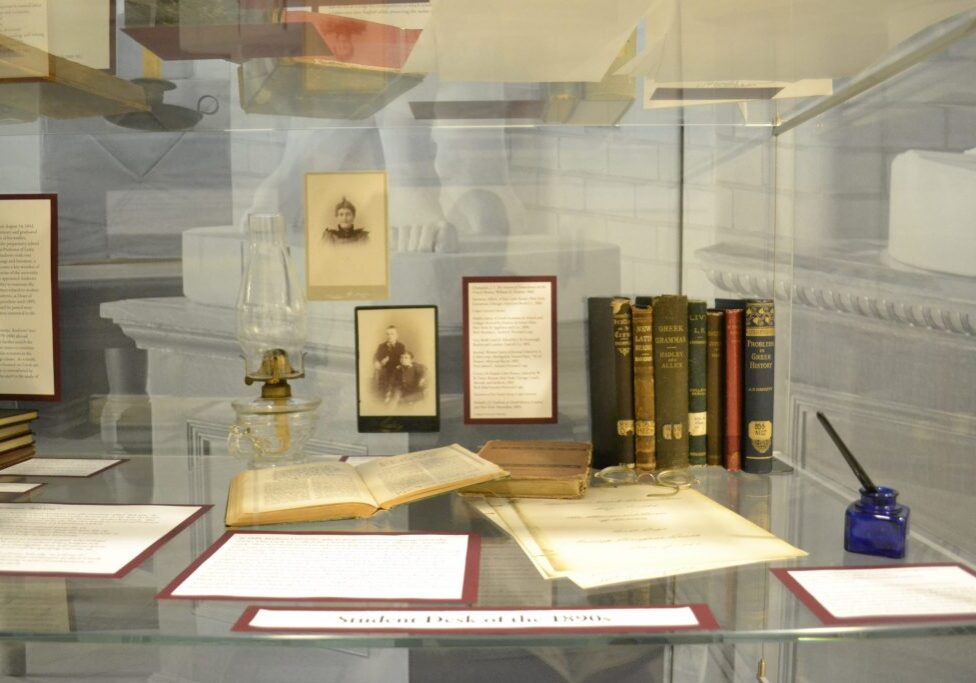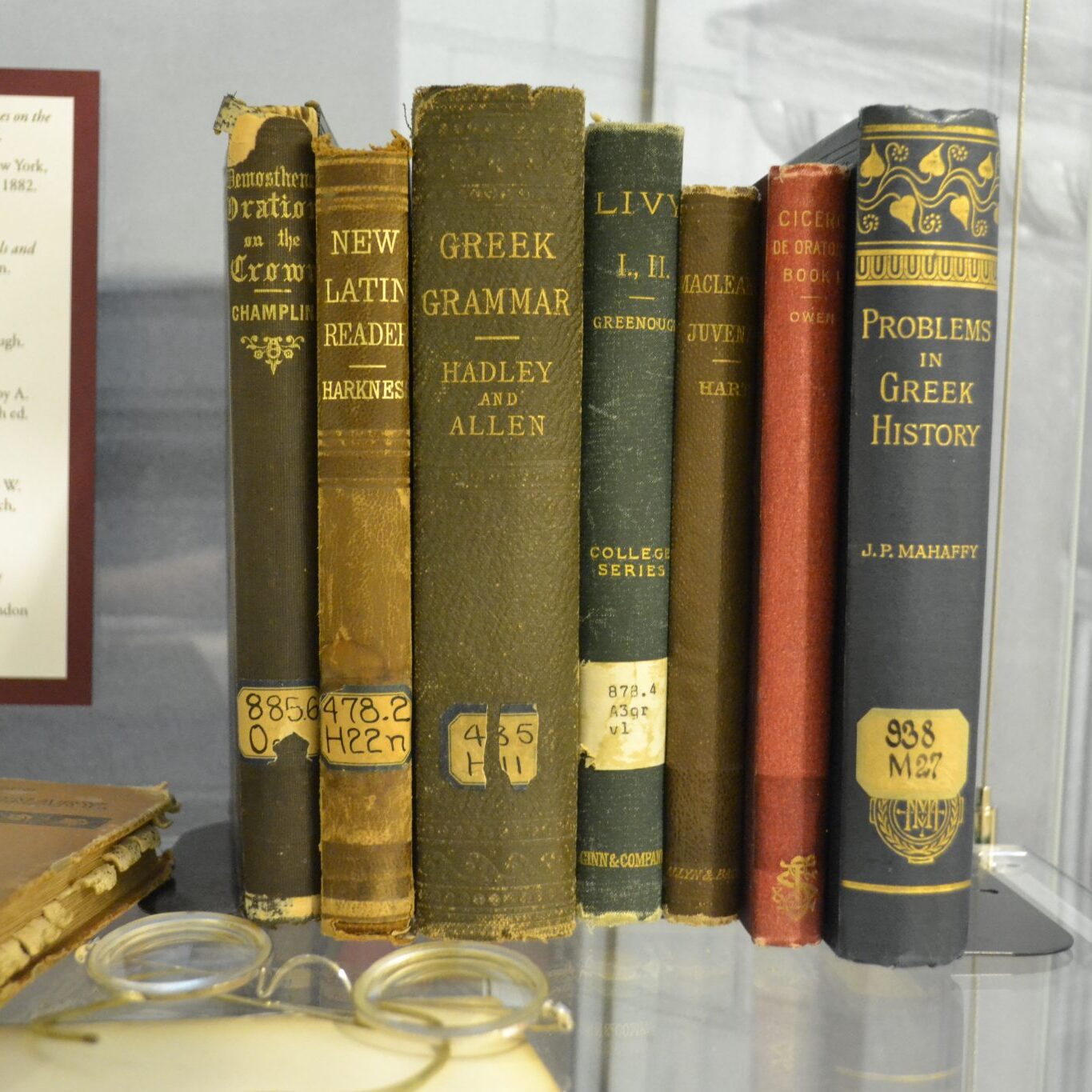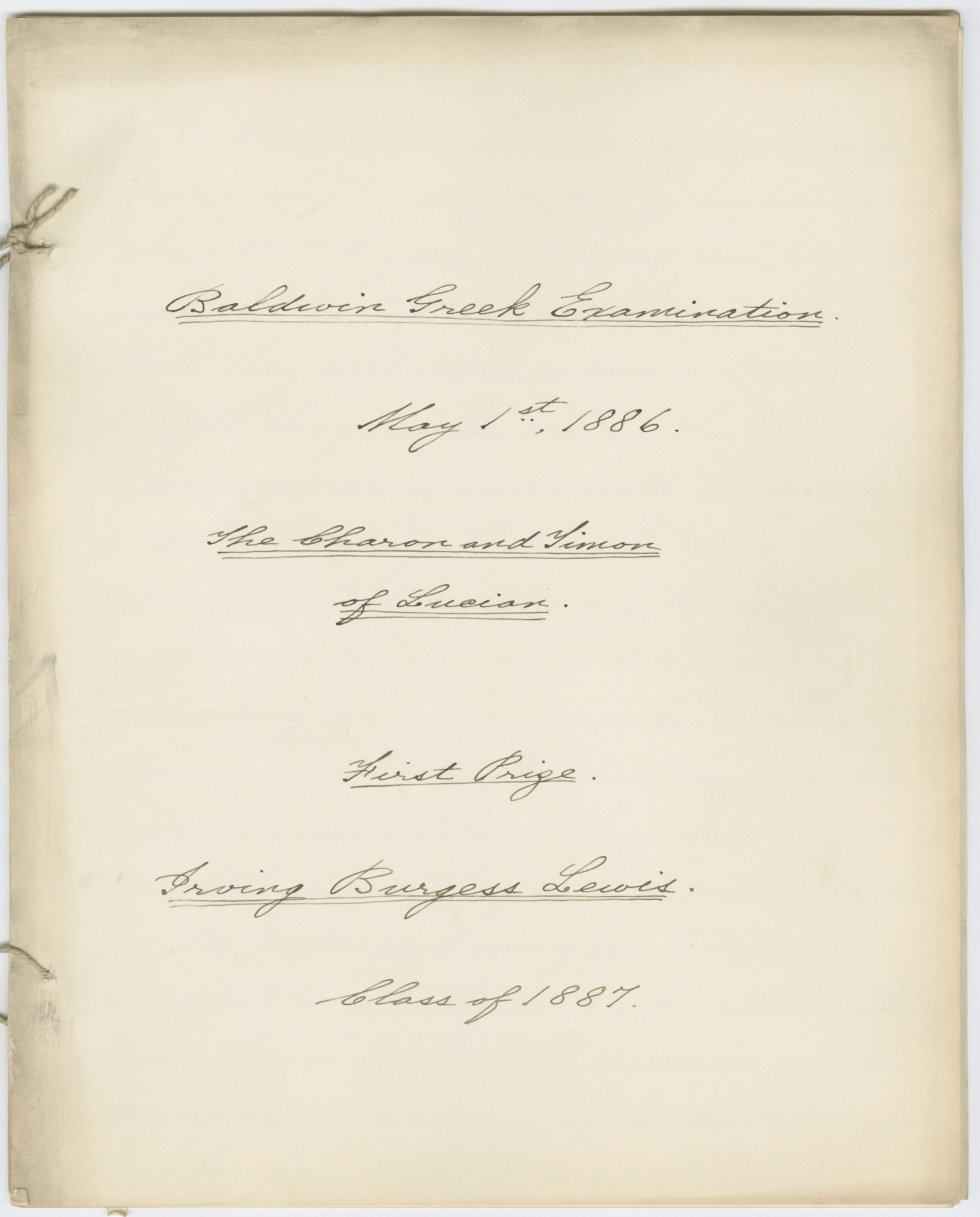The Student Desk of the 1890s
Curricular Changes of the 1880s
In 1885, Madison University split its program into two separate curricular tracks: the Classical track and the Scientific track. This foreshadowed a trend towards greater specialization in the university’s educational system. The new Classical track offered students a broader range of courses resulting in a greater variety of ancient authors to study. Students following the newly introduced Scientific track would have still had to take either Latin or Greek for the first two years of their education at Colgate, as these languages were still seen as important for the development of a young man's intellect.
Student Textbooks
Some of the books shown here represent the new freedom allowed by the expansion of the curriculum, and some represent old traditions. Cicero’s De Oratore, Juvenal’s Satires, and Catullus’ Carmina were taught as part of the new curriculum after 1885. Livy’s History of Rome and Demosthenes’ Oration on the Crown were both long-standing texts in the university’s classical curriculum, and practically every student in its early history would have been familiar with them. In addition to these primary texts, students were required to have a number of reference books to supplement their knowledge of the classical world. Some of the most notable include Hadley and Allen’s Greek Grammar and Harkness’ New Latin Reader, which were staples for the university student. Several publications by Mahaffy, such as Problems in Greek History, were used during this period, and they offered a broader view of social and historical aspects of ancient culture.
Scansion
This page from Catullus' Works has been annotated by a student with long and short marks to indicate scansion as well as marks for elision. This shows that understanding meter and style were important parts of classical education along with translation. The student may have been marking the book in order to practice the meter for oratorical purposes for his recitations.
Baldwin Greek Prize
Prize exams in both Latin and Greek were given at the end of each semester, and the winner of the first and second prize in the competition won monetary rewards. This Greek exam belonging to Irving Burgess Lewis, class of 1887, won first place in May of 1886 with a translation of Lucian’s Timon and Charon. The student would have to translate a Greek passage, answer general questions about Greek history, and even compose some Greek sentences himself in order to win the prize.



